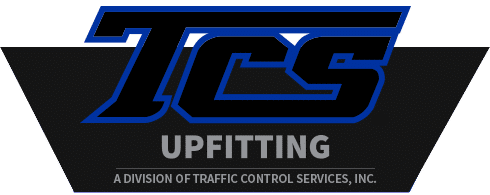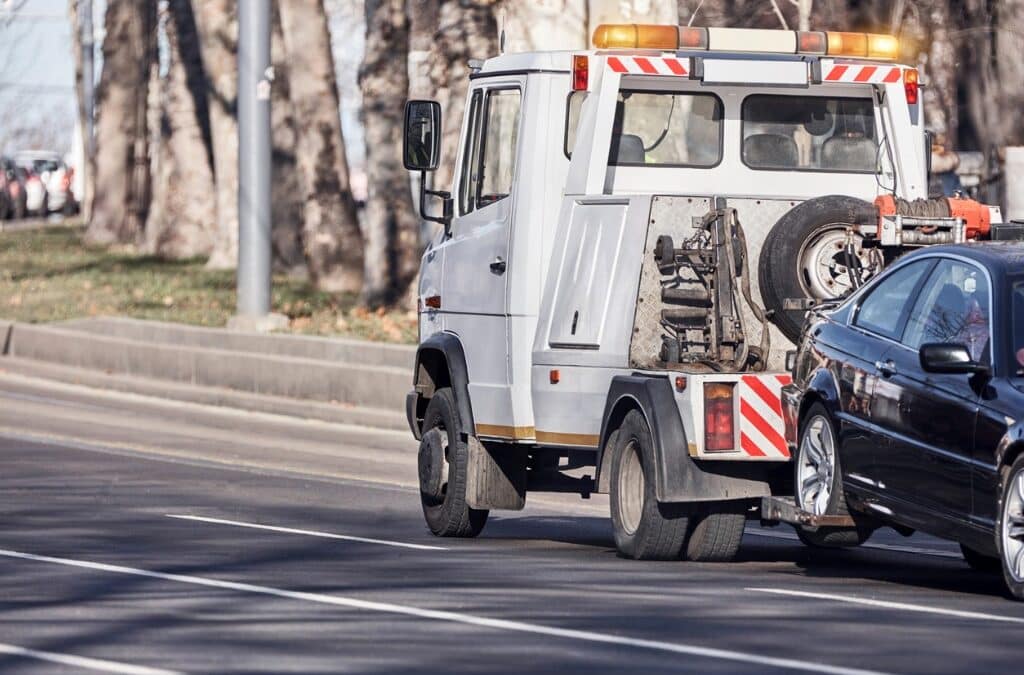Although police cars, fire trucks, and ambulances immediately come to mind when discussing emergency vehicles, did you know that some state laws classify tow trucks and wreckers as emergency vehicles? These laws are particularly important in the wrecker and tow truck industry, as they are often required to respond to emergency situations.
But what is a wrecker, and why do some states consider them emergency vehicles? In this article, we’ll go over what a wrecker is, the various types of wreckers, and when they are considered an emergency vehicle.
Continue reading below to learn more, and be sure to contact TCS Upfitting today for all of your emergency vehicle upfitting needs.
What Is a Wrecker and What Do They Do?
You’ve probably seen a few different tow trucks while driving around, and you’ve likely seen the term “wrecker” on the side of the truck. However, because wrecker services is a broad term used to describe the general use of tow trucks, many people aren’t often sure what exactly a wrecker is.
A wrecker vehicle is one of the most commonly used types of tow trucks due to its adaptability regarding a broader range of broken down, improperly parked, impounded, or otherwise indisposed motor vehicles. Wrecker services are often used for various reasons, including recovering or removing a vehicle that has been damaged or totaled in an accident, towing a vehicle to a nearby repair shop, or transporting a junk car from an owner’s residence to a local scrapyard.
Here are some of the most common types of wreckers that you might have seen while on the road.
Hook and Chain Tow Truck
Hook and chain tow trucks are the most common types of wreckers and are typically used when a broken-down vehicle is being towed away from the side of the road.
Flatbed Tow Truck
A flatbed tow truck has a large flatbed on which a vehicle can be loaded onto the truck’s bed and removed from its location.
Wheel Lift Tow Truck
Wheel lift tow trucks are very similar to hook and chain tow trucks, with the exception that there are no hooks or chains involved. Instead, a yoke, which is a tool attached to the back of the tow truck that attaches under the front wheels of the car, is used to lift and remove a vehicle from its location.
Integrated Tow Truck
Integrated tow trucks are most commonly used with larger vehicles. While many people don’t consider it, trucks and buses break down frequently, and standard tow trucks often struggle to transport vehicles of this size. Because integrated tow trucks are much larger, they are designed for instances that require a more powerful tow truck.
Oversized Tow Truck
Oversized tow trucks are much like integrated tow trucks and are heavy-duty vehicles capable of towing and transporting large-scale fleet operations.
Boom Truck
A boom truck is a type of tow truck with a hydraulic arm, referred to as the boom, and resembles a miniature crane. When a vehicle needs to be towed, the boom reaches out past the end of the vehicle, grabs the vehicle, and transports it to its final destination.
Rotator Truck
Lastly, rotator trucks are the largest tow trucks in the industry. They’re similar to large construction cranes, with a boom that can rotate 360 degrees and extend upwards of 30 feet. This gives them the strength and flexibility to tow vehicles one even the most difficult situations.
When Is a Wrecker an Emergency Vehicle?
So, when is a wrecker considered to be an emergency vehicle? While police cars, ambulances, and fire engines are undeniably emergency vehicles, wreckers and tow trucks fit this description, but the regulations governing their use may vary.
Any vehicle used to respond to emergencies is classified as an emergency vehicle, and because wreckers and tow trucks assist with auto-related emergencies, they also fall into this category. However, while a wrecker can be designated as an emergency vehicle once it has been approved in writing by the state patrol, because it has been designated as an emergency vehicle doesn’t mean they can do everything a police car or fire truck can.
For example, wreckers are authorized as emergency vehicles in some states, and they are permitted to flash white and amber lights and red and blue lights at the scene of an emergency. In other states, however, wreckers are only classified as emergency vehicles if they are performing an emergency service, while other states only consider wreckers to be “authorized service vehicles,” but they are still allowed to use flashing, oscillating, or rotating yellow lights.
Simply put, a wrecker is an emergency vehicle when it is performing a recovery or loading operation along the roadway. In this instance, wreckers must turn on their emergency vehicle lights to indicate an emergency and alert other drivers to be cautious while passing.
Wreckers can also carry white lamps in addition to amber emergency vehicle lights, but these must only be used to illuminate a breakdown or accident site. They are usually available in an amber light bar and are directed so that they do not cause inconvenience to other drivers. Although blue lights have been seen on some wreckers, they are only permitted on law enforcement vehicles.
Upfit Your Wreckers with TCS Upfitting
Do you own a fleet of wreckers or tow trucks that are often required to respond to emergency situations?
At TCS Upfitting, we understand your vehicles’ importance to your company’s daily operations. As a result, it’s our number one priority to ensure that your vehicles meet your specific needs, and our team of professionals is committed to providing you with exceptional upfitting services to ensure that your vehicle meets your exact specifications.
We’re proud to be Kansas City’s one-stop-shop for emergency vehicle upfitting, and we remain dedicated to providing you with a wide range of high-quality accessories and excellent customer service for all of your upfitting needs.
Contact TCS Upfitting today to learn more about our emergency vehicle upfitting services and find out how our team of specialists can help you select the best upfits for your vehicles.


